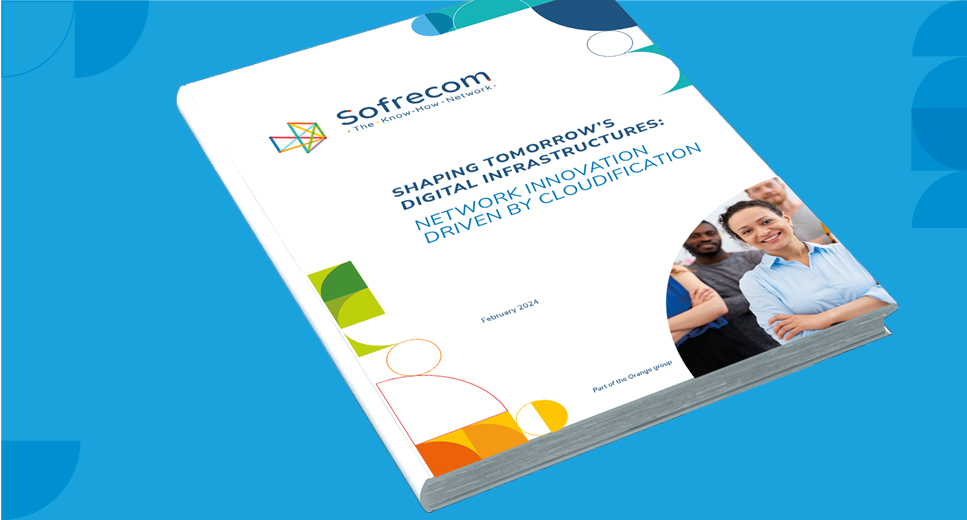

In the financial departments of operators, the same complaint resonates: where is the business case?
This brief presentation serves as an initial balm to soothe this pain.
Operational efficiency: The first source of profit
In a white paper dedicated to telco cloud, VMware announced CapEx and OpEx gains of up to 38% when transitioning to the cloud. The general principle is that migration to a multi-cloud platform reduces costs produced by technological silos.
For example, we can expect a 15% improvement in configuration management thanks to end-to-end provisioning (instead of doing it for each silo separately, then together afterwards). Automation is also expected to resolve problems 95% faster. These positive outcomes directly impact staff costs or customer satisfaction (i.e. churn rate). There are also advantages in terms of hardware utilization, with radio cells in particular offering power savings of around 15%. These end-to-end architectures allow greater flexibility for launching new services- VMware claims a 40% improvement in the time needed to design, build, test and deploy.
Ultimately, a virtualized operator has a different cost structure. IT expenditure will be higher, reflecting the emphasis placed on software. CapEx and OpEx costs, on the other hand, will be lower, as they require less physical infrastructure and benefit from greater efficiency. The digitization of services might also result in lower marketing costs.
This vision is mainly relevant to a ‘greenfield’ operator— one who deploys a virtualized architecture from the start. In the real world operators need also to integrate legacy systems and migrate customers.
In terms of external revenues, different areas can be identified.
Virtual network services encompass hosting and offering networking functions. This concerns customers that operate networks for their own usage.
MNOs (and MVNOs in particular) will be able to buy elements of virtualized networks, even some time as-you-go. For instance, German operator, 1&1 AG, has announced the launch of its cloud services in partnership with Rakuten Symphony, owned by Japanese operator, Rakuten. The latter has developped this architecture for its own usage and has decided to monetize it, thus becoming a competitor of telecom vendor like Nokia. Operators and manufacturers compete on the same field.
Thanks to their scalability, virtual solutions are particularly well suited to building private mobile networks. These networks are deployed in the manufacturing and mining industries. But who constructs these networks? It’s also the businesses or their integrators and equipment suppliers, who find themselves in the same market as mobile operators. Analysis Mason estimates that this market will be worth 9 billion euros by 2028.
In a completely different use case, data centers can host virtual network functions (VNFs) for international fixed networks (Wide Area Networks), such as SD-WAN or access control. This becomes particularly relevant when these same data centers host customer applications. Cloud providers such as AWS or Equinix can thus become enablers of network building blocks purchased by companies.
Orange Business has announced the integration of VMware’s SD-WAN solutions into its evolution platform infrastructure. This consists of “a global network encompassing a Super Point-of-Presence (PoP) close to end users and cloud providers, minimizing latency for applications”. In this way, Orange Business aims to be a provider of cloudified network functions. Network and cloud providers are on the same playing field; these combined markets are worth several hundred billion.
Back to user services, the softwarization of network services opens up the possibility of creating interfaces in the form of APIs (Application Programming Interfaces) between networks and third parties. What value can this bring? APIs can be used for both control (such as configuration, including real-time) and information gathering. To understand the value of these functions, we need to go back to the use cases to which they apply.
Connected objects can benefit from network APIs, particularly security functions. Devices such as cameras are proliferating but are still highly vulnerable to attacks. The network layer is much more protected and can indicate in real time if the object has been moved or if its SIM has been altered. The companies that manage these objects are already interconnected via APIs with their network providers. Therefore, these new, richer APIs offer a seamless continuation of functionality. The M2M connectivity market represents around 5-10% of the total mobile connectivity market.
Automatic configuration can be applied to bandwidth allocation or on-demand routing features specifically designed for premium services, especially within mobile networks.
Some flows can be dynamically routed as close as possible to the application (at the edge) to optimize response times. This not only applies to specific B2B applications such as drone piloting, but also to certain B2C gaming configurations.
Regarding bandwidth on-demand, it primarily focuses on event-triggered services (where bandwidth allocation is temporary) or prioritization services (such as pre-emption for emergency services or premium business services).
In all these cases, APIs are capabilities that enhance services, but do not add value on their own. On the other hand, the exposure to these APIs is a new field that will bring new players into the telecoms value chain- marketplaces, platform providers, aggregators.
The monetization of these APIs by these new players depends on the adoption of these services... which don’t yet exist.
In conclusion, monetizing virtualization refers to:
• A business case developed internally, suitable for new operators starting from scratch, but necessitating a carefully managed transition for existing operators with legacy systems.
• Original opportunities for coopetition between network software players, cloud players and telecom operators, to the point where it’s becoming difficult to distinguish between the different markets.
• Extremely diverse use cases, accelerated by the emergence of networks by APIs, which have no value on their own, but do have a disruptive potential.
Bearing the aforementioned in mind, we can advise our CFO to provision the costs of a transformation program to reap the fruits of operational efficiency. From an external perspective, virtualization is accelerating the convergence of the IT and telecoms markets. On the one hand, it enhances the value of network services (with APIs), while on the other, it facilitates the potential arrival of new players on the operators’ turf (private networks, for example). We’re obliged to play both sides at once.




